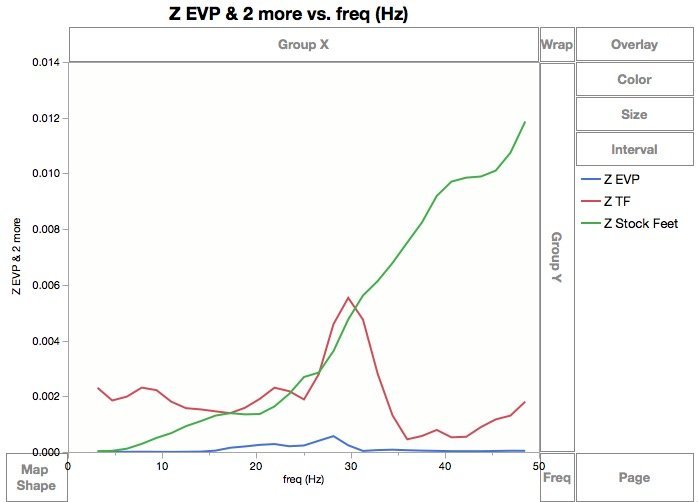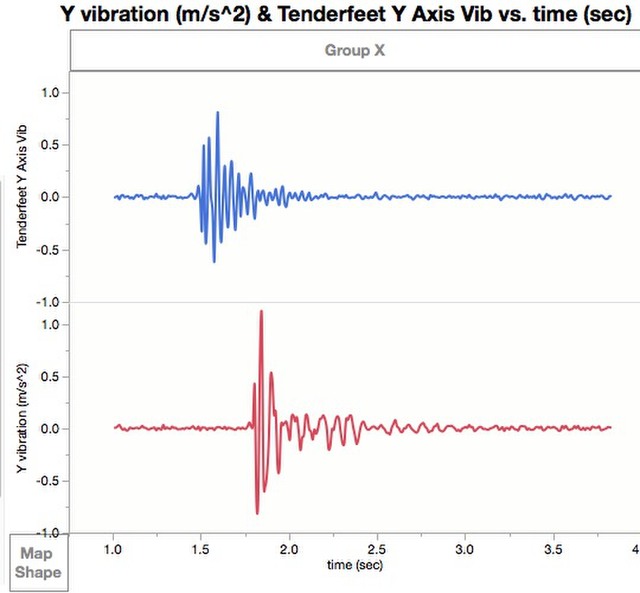Puma Cat
Well-known member
- Thread Author
- #1
So...I've been doing a lot of studies in reducing and attenuating vibration in my audio rack lately. I've been doing comparisons using wooden blocks under 1 3/4" hard rock maple boards, using cork & rubber and Diversitech closed-cell foam and rubber anti-vibration pads under the maple board, and Herbie's Audio Labs Tenderfeet under the DAC, either on the maple board or just on top of the top shelf. So, far, I've found the best vibration attenuation by having the DAC sitting on the Tenderfeet just sitting on the top shelf of the rack w/o the maple board.
Well, the footers I just got, the EVPs from A/V Roomservice work the best, by far.
Shown here is a plot of the vibration imparted on to my Schiit Gungnir DAC (Gumby). The vibration is imparted by a home-made slide hammer dropping onto the top shelf my Sanus Euro II audio rack (which has shelves of powder-coated particle board), with the iPhone running Vibsensor sitting on top of the DAC. The phone is hanging off the DAC as much as it can w/o falling off so it damps the DAC as little as possible. The iPhone is measuring the vibration imparted as Power, RMS, using the VibSensor app. The data is plotted in JMP 14.
The red trace is Herbie's Audio Lab Tenderfoot footer under Gumby, and the blue trace are the EVPs under Gumby.

Wow. This greater than an order of magnitude lower amount of vibration imparted using the EVPs under the DAC vs. the Herbie's Audio Labs Tenderfoot footer.
Well, the footers I just got, the EVPs from A/V Roomservice work the best, by far.
Shown here is a plot of the vibration imparted on to my Schiit Gungnir DAC (Gumby). The vibration is imparted by a home-made slide hammer dropping onto the top shelf my Sanus Euro II audio rack (which has shelves of powder-coated particle board), with the iPhone running Vibsensor sitting on top of the DAC. The phone is hanging off the DAC as much as it can w/o falling off so it damps the DAC as little as possible. The iPhone is measuring the vibration imparted as Power, RMS, using the VibSensor app. The data is plotted in JMP 14.
The red trace is Herbie's Audio Lab Tenderfoot footer under Gumby, and the blue trace are the EVPs under Gumby.

Wow. This greater than an order of magnitude lower amount of vibration imparted using the EVPs under the DAC vs. the Herbie's Audio Labs Tenderfoot footer.


